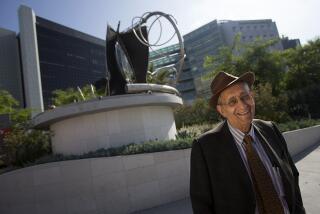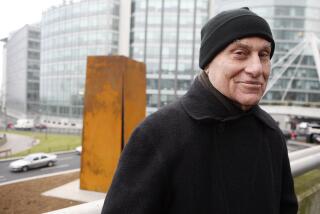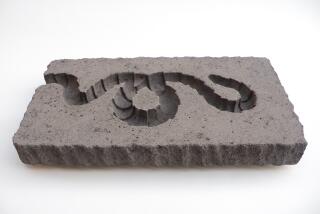James L. Prestini; Sculptor Worked in Wood, Metal
- Share via
BERKELEY, Calif. — James L. Prestini, whose wood and metal sculptures are in collections in New York, Washington and Berlin, has died of heart failure after being ill for several months. He was 85.
Prestini, who died Monday at Alta Bates Medical Center, was a professor emeritus of architecture at UC Berkeley, where he taught design from 1956 to 1975.
At least 260 of his works are held in permanent collections throughout the world, including the Museum of Modern Art and the Metropolitan Museum of Art in New York, the Smithsonian Institution and the Berlin Bauhaus-Archiv.
Prestini gained perhaps his greatest recognition when he was in his 80s. Two years ago, dozens of wood sculptures he created between 1938 and 1953 were displayed simultaneously in the Metropolitan Art Museum, the Museum of Modern Art and the IBM Museum in New York and in the Boston Museum of Fine Art.
“Typical of the art world,” he told San Francisco Chronicle columnist Herb Caen. “Nobody recognizes these pieces for 50 years and then. . . .”
The San Francisco Museum of Modern Art bought Prestini pieces in 1969 and showed them for only a few months, Caen reported, and has had them in storage ever since.
Prestini was educated as a machinist’s apprentice and later went on to earn his bachelor’s degree in mechanical engineering at Yale.
He learned wood turning on the lathe while teaching math at a private boys school in the 1930s, and is credited for elevating the craft to a contemporary art form. His wooden bowls were, as one critic wrote “perfectly plain, with the emphasis on ‘perfect.’ ” His work was known for its elegant forms, thin walls and graceful lines.
Prestini, who had worked as an engineer, went on to teach design at the Illinois Institute of Technology and then at Berkeley. He also played a major role in developing the Berkeley Architecture Department’s design laboratory.
He was part of a design team that won the Museum of Modern Art’s furniture competition in 1948 by crafting a jointless chair made from durable wood pulp.
Switching from wood to metal, Prestini began displaying his metal sculptures in the 1960s.
He has no survivors.
More to Read
The biggest entertainment stories
Get our big stories about Hollywood, film, television, music, arts, culture and more right in your inbox as soon as they publish.
You may occasionally receive promotional content from the Los Angeles Times.










